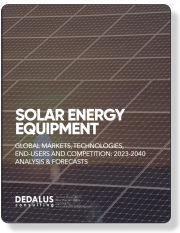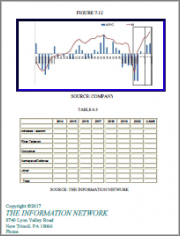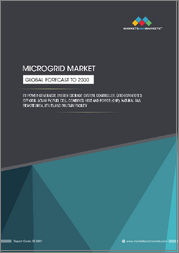
|
시장보고서
상품코드
1677813
태양광 모듈 시장 규모, 점유율, 성장 분석 : 기술별, 설치 유형별, 효율성별, 사이즈별, 용도별, 지역별 - 산업 예측(2025-2032년)Solar PV Module Market Size, Share, and Growth Analysis, By Technology, By Mounting Type, By Efficiency, By Size, By Application, By Region - Industry Forecast 2025-2032 |
||||||
세계의 태양광 모듈 시장 규모는 2023년에 2,805억 달러로 평가되며, 예측 기간(2025-2032년)의 CAGR은 8.2%로, 2024년 3,035억 달러에서 2032년에는 5,701억 4,000만 달러로 성장할 전망입니다.
기후 변화에 대한 우려와 함께 깨끗하고 지속가능한 에너지원에 대한 관심이 전 세계에서 높아지면서 태양광발전(PV) 모듈 시장이 급성장하고 있습니다. 반도체 기반 태양전지를 상호 연결한 태양전지판은 에너지 전환에 있으며, 중요한 역할을 하고 있습니다. 각국 정부는 지원 정책과 인센티브를 통해 태양광 기술 채택을 촉진하고 있으며, 이는 시장 확대를 더욱 촉진하고 있습니다. 기술의 발전으로 태양광 모듈의 성능과 내구성이 향상되어 태양광 에너지가 더욱 친숙하고 비용 효율적인 에너지가 되고 있습니다. 규모의 경제로 인한 제조 비용의 감소도 이러한 추세에 기여하고 있습니다. 양면 패널 및 건물일체형 태양광발전(BIPV)과 같은 기술 혁신은 주거 및 상업 분야 모두에서 용도가 확대되고 있으며, 재생에너지로의 전환에 있으며, 태양광 모듈 시장은 계속해서 강력한 성장세를 이어갈 것입니다.
목차
서론
- 조사의 목적
- 조사 범위
- 정의
조사 방법
- 정보 조달
- 2차와 1차 데이터 방법
- 시장 규모 예측
- 시장의 전제조건과 제한
개요
- 세계 시장 전망
- 공급과 수요 동향 분석
- 부문별 기회 분석
시장 역학과 전망
- 시장 개요
- 시장 규모
- 시장 역학
- 촉진요인과 기회
- 억제요인과 과제
- Porter의 산업 분석
주요 시장 인사이트
- 주요 성공 요인
- 경쟁의 정도
- 주요 투자 기회
- 시장 에코시스템
- 시장의 매력 지수(2024년)
- PESTEL 분석
- 거시경제 지표
- 밸류체인 분석
- 가격 분석
- 사례 연구
- 규제 상황
태양광 모듈 시장 규모 : 기술별 & CAGR(2025-2032)
- 시장 개요
- 단결정 태양전지
- 다결정 태양전지
- 박막 태양전지
- 페로브스카이트 태양전지
태양광 모듈 시장 규모 : 설치 유형별 & CAGR(2025-2032)
- 시장 개요
- 옥상 설치형 태양전지판
- 지상 설치형 태양전지판
태양광 모듈 시장 규모 : 효율성별 & CAGR(2025-2032)
- 시장 개요
- 15-20%
- 20-25%
- 25% 이상
태양광 모듈 시장 규모 : 사이즈별 & CAGR(2025-2032)
- 시장 개요
- 소(100W 미만)
- 중(100-500W)
- 대(500W 이상)
태양광 모듈 시장 규모 : 용도별 & CAGR(2025-2032)
- 시장 개요
- 주택용
- 상업용
- 산업용
- 대규모 태양광발전소
태양광 모듈 시장 규모 : 지역별 & CAGR(2025-2032)
- 북미
- 미국
- 캐나다
- 유럽
- 독일
- 스페인
- 프랑스
- 영국
- 이탈리아
- 기타 유럽 지역
- 아시아태평양
- 중국
- 인도
- 일본
- 한국
- 기타 아시아태평양
- 라틴아메리카
- 브라질
- 기타 라틴아메리카 지역
- 중동 및 아프리카
- GCC 국가
- 남아프리카공화국
- 기타 중동 및 아프리카
경쟁 정보
- 상위 5사의 비교
- 주요 기업의 시장 포지셔닝(2024년)
- 주요 시장 기업이 채택한 전략
- 최근 시장 동향
- 기업의 시장 점유율 분석(2024년)
- 주요 기업의 기업 개요
- 기업의 상세
- 제품 포트폴리오 분석
- 기업의 부문별 점유율 분석
- 매출의 전년대비 비교(2022-2024)
주요 기업 개요
- LONGi Solar(China)
- Jinko Solar(China)
- Trina Solar(China)
- JA Solar(China)
- Canadian Solar(Canada)
- First Solar(USA)
- Risen Energy(China)
- Hanwha Q CELLS(South Korea)
- SunPower(USA)
- GCL System Integration(China)
- Chint Solar(China)
- Tongwei Solar(China)
- Seraphim Solar(China)
- Yingli Solar(China)
- Talesun Solar(China)
- REC Group(Singapore)
- Suntech Power(China)
- Astronergy(China)
- BYD Solar(China)
- LG Electronics(South Korea)
결론과 제안
KSA 25.04.18Global Solar PV Module Market size was valued at USD 280.5 billion in 2023 and is poised to grow from USD 303.5 billion in 2024 to USD 570.14 billion by 2032, growing at a CAGR of 8.2% during the forecast period (2025-2032).
The solar photovoltaic (PV) module market is experiencing rapid growth, driven by the increasing global focus on clean and sustainable energy sources amid climate change concerns. Solar panels, composed of interconnected semiconductor-based solar cells, play a vital role in energy conversion. Governments worldwide are promoting the adoption of solar technologies through supportive policies and incentives, further boosting market expansion. Technological advancements have enhanced the performance and durability of solar PV modules, making solar energy more accessible and cost-effective. The decreasing costs of manufacturing due to economies of scale also contribute to this trend. Innovations like bifacial panels and building-integrated photovoltaics (BIPV) are expanding applications in both residential and commercial sectors, positioning the solar PV module market for continued robust growth in the transition to renewable energy.
Top-down and bottom-up approaches were used to estimate and validate the size of the Global Solar Pv Module market and to estimate the size of various other dependent submarkets. The research methodology used to estimate the market size includes the following details: The key players in the market were identified through secondary research, and their market shares in the respective regions were determined through primary and secondary research. This entire procedure includes the study of the annual and financial reports of the top market players and extensive interviews for key insights from industry leaders such as CEOs, VPs, directors, and marketing executives. All percentage shares split, and breakdowns were determined using secondary sources and verified through Primary sources. All possible parameters that affect the markets covered in this research study have been accounted for, viewed in extensive detail, verified through primary research, and analyzed to get the final quantitative and qualitative data.
Global Solar Pv Module Market Segments Analysis
Global Solar PV Module Market is segmented by Technology, Mounting Type, Efficiency, Size, Application and region. Based on Technology, the market is segmented into Monocrystalline Solar Cells, Polycrystalline Solar Cells, Thin-film Solar Cells and Perovskite Solar Cells. Based on Mounting Type, the market is segmented into Rooftop Solar Panels and Ground-Mounted Solar Panels. Based on Efficiency, the market is segmented into 15-20%, 20-25% and Above 25%. Based on Size, the market is segmented into Small (<100 W), Medium (100-500 W) and Large (>500 W). Based on Application, the market is segmented into Residential, Commercial, Industrial and Utility-Scale Solar Power Plants. Based on region, the market is segmented into North America, Europe, Asia Pacific, Latin America and Middle East & Africa.
Driver of the Global Solar Pv Module Market
The increasing concern over climate change and the urgent requirement to lower greenhouse gas emissions have spurred significant investments in renewable energy sources, particularly solar power. Solar photovoltaic (PV) modules offer a clean and sustainable energy option, which is driving their widespread adoption. As more consumers and businesses recognize the importance of transitioning towards eco-friendly energy solutions, the demand for solar PV modules continues to rise. This shift not only contributes to environmental preservation but also aligns with global efforts to promote renewable energy assets. Consequently, the global solar PV module market is witnessing substantial growth as a result of these overarching trends.
Restraints in the Global Solar Pv Module Market
Despite the reduction in solar panel costs, the initial installation expenses continue to pose a challenge for some consumers and organizations. This upfront financial burden can deter potential adopters in the Global Solar PV Module market. However, the availability of financing solutions and incentives plays a crucial role in alleviating this issue, making solar energy more accessible. By providing financial support and favorable terms, these options can encourage a broader range of clients to invest in solar technology, thus promoting market growth and facilitating the transition to renewable energy sources. Addressing these barriers is vital for industry expansion.
Market Trends of the Global Solar Pv Module Market
The Global Solar PV Module market is witnessing a significant shift towards bifacial solar panels, driven by their ability to harness sunlight from both sides, resulting in increased energy generation efficiency. This trend is particularly prominent in utility-scale installations and commercial projects, where maximizing power output is crucial to improving return on investment. As incentives for renewable energy grow and technology advancements continue, bifacial modules are being increasingly adopted due to their higher performance ratios and long-term economic benefits. This evolution reflects a broader market demand for more efficient, sustainable solutions, positioning bifacial panels as a leading choice in the competitive solar landscape.
Table of Contents
Introduction
- Objectives of the Study
- Scope of the Report
- Definitions
Research Methodology
- Information Procurement
- Secondary & Primary Data Methods
- Market Size Estimation
- Market Assumptions & Limitations
Executive Summary
- Global Market Outlook
- Supply & Demand Trend Analysis
- Segmental Opportunity Analysis
Market Dynamics & Outlook
- Market Overview
- Market Size
- Market Dynamics
- Drivers & Opportunities
- Restraints & Challenges
- Porters Analysis
- Competitive rivalry
- Threat of substitute
- Bargaining power of buyers
- Threat of new entrants
- Bargaining power of suppliers
Key Market Insights
- Key Success Factors
- Degree of Competition
- Top Investment Pockets
- Market Ecosystem
- Market Attractiveness Index, 2024
- PESTEL Analysis
- Macro-Economic Indicators
- Value Chain Analysis
- Pricing Analysis
- Case Studies
- Regulatory Landscape
Global Solar PV Module Market Size by Technology & CAGR (2025-2032)
- Market Overview
- Monocrystalline Solar Cells
- Polycrystalline Solar Cells
- Thin-film Solar Cells
- Perovskite Solar Cells
Global Solar PV Module Market Size by Mounting Type & CAGR (2025-2032)
- Market Overview
- Rooftop Solar Panels
- Ground-Mounted Solar Panels
Global Solar PV Module Market Size by Efficiency & CAGR (2025-2032)
- Market Overview
- 15-20%
- 20-25%
- Above 25%
Global Solar PV Module Market Size by Size & CAGR (2025-2032)
- Market Overview
- Small (<100 W)
- Medium (100-500 W)
- Large (>500 W)
Global Solar PV Module Market Size by Application & CAGR (2025-2032)
- Market Overview
- Residential
- Commercial
- Industrial
- Utility-Scale Solar Power Plants
Global Solar PV Module Market Size & CAGR (2025-2032)
- North America (Technology, Mounting Type, Efficiency, Size, Application)
- US
- Canada
- Europe (Technology, Mounting Type, Efficiency, Size, Application)
- Germany
- Spain
- France
- UK
- Italy
- Rest of Europe
- Asia Pacific (Technology, Mounting Type, Efficiency, Size, Application)
- China
- India
- Japan
- South Korea
- Rest of Asia-Pacific
- Latin America (Technology, Mounting Type, Efficiency, Size, Application)
- Brazil
- Rest of Latin America
- Middle East & Africa (Technology, Mounting Type, Efficiency, Size, Application)
- GCC Countries
- South Africa
- Rest of Middle East & Africa
Competitive Intelligence
- Top 5 Player Comparison
- Market Positioning of Key Players, 2024
- Strategies Adopted by Key Market Players
- Recent Developments in the Market
- Company Market Share Analysis, 2024
- Company Profiles of All Key Players
- Company Details
- Product Portfolio Analysis
- Company's Segmental Share Analysis
- Revenue Y-O-Y Comparison (2022-2024)
Key Company Profiles
- LONGi Solar (China)
- Company Overview
- Business Segment Overview
- Financial Updates
- Key Developments
- Jinko Solar (China)
- Company Overview
- Business Segment Overview
- Financial Updates
- Key Developments
- Trina Solar (China)
- Company Overview
- Business Segment Overview
- Financial Updates
- Key Developments
- JA Solar (China)
- Company Overview
- Business Segment Overview
- Financial Updates
- Key Developments
- Canadian Solar (Canada)
- Company Overview
- Business Segment Overview
- Financial Updates
- Key Developments
- First Solar (USA)
- Company Overview
- Business Segment Overview
- Financial Updates
- Key Developments
- Risen Energy (China)
- Company Overview
- Business Segment Overview
- Financial Updates
- Key Developments
- Hanwha Q CELLS (South Korea)
- Company Overview
- Business Segment Overview
- Financial Updates
- Key Developments
- SunPower (USA)
- Company Overview
- Business Segment Overview
- Financial Updates
- Key Developments
- GCL System Integration (China)
- Company Overview
- Business Segment Overview
- Financial Updates
- Key Developments
- Chint Solar (China)
- Company Overview
- Business Segment Overview
- Financial Updates
- Key Developments
- Tongwei Solar (China)
- Company Overview
- Business Segment Overview
- Financial Updates
- Key Developments
- Seraphim Solar (China)
- Company Overview
- Business Segment Overview
- Financial Updates
- Key Developments
- Yingli Solar (China)
- Company Overview
- Business Segment Overview
- Financial Updates
- Key Developments
- Talesun Solar (China)
- Company Overview
- Business Segment Overview
- Financial Updates
- Key Developments
- REC Group (Singapore)
- Company Overview
- Business Segment Overview
- Financial Updates
- Key Developments
- Suntech Power (China)
- Company Overview
- Business Segment Overview
- Financial Updates
- Key Developments
- Astronergy (China)
- Company Overview
- Business Segment Overview
- Financial Updates
- Key Developments
- BYD Solar (China)
- Company Overview
- Business Segment Overview
- Financial Updates
- Key Developments
- LG Electronics (South Korea)
- Company Overview
- Business Segment Overview
- Financial Updates
- Key Developments



















